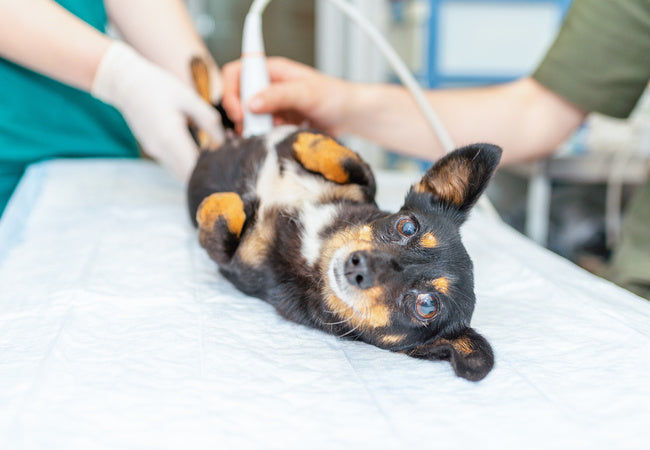Dog C‑Section Surgery 2025: Complete Veterinary Guide 🩺🐾

In this article
Dog C‑Section Surgery 2025: Complete Veterinary Guide 🩺🐾
By Dr. Duncan Houston BVSc
Hello, I’m Dr Duncan Houston BVSc, veterinarian and founder of Ask A Vet. A canine C‑section (Cesarean section or hysterotomy) is an abdominal surgery to deliver puppies when natural birth isn’t safe or possible. In 2025, refined surgical techniques, anesthesia protocols, and recovery management make C‑sections safer than ever. This guide details indications, timing, procedure steps, aftercare, risks, costs, and how to Ask A Vet to support you through the process. Let’s ensure a safe arrival for moms and puppies! 🐶💙
1. 🍼 What Is a Dog C‑Section?
A dog C‑section involves surgically opening the abdomen and uterus to remove puppies when birth complications arise. It can be elective (planned) or emergency, depending on circumstances.
2. 🧭 When Is It Needed?
2.1 Planned C‑Section
- High‑risk breeds (e.g., brachycephalic dogs like Bulldogs).
- History of dystocia or prior C‑sections.
- Single puppy pregnancies or oversized litters.
2.2 Emergency C‑Section
- Dystocia signs: prolonged labor stages, weak contractions, fetal distress.
- Health compromise: uterine tears, maternal illness, stuck fetuses.
3. ⏳ Timing for Elective C‑Sections
Optimal timing is between **day 61 and 65 post‑ovulation**, about 24 hours before expected whelping. Outside this window risks premature or overdue surgery.
4. 🛠️ Procedure Steps
- Pre-op prep: Bloodwork, IV catheter, abdominal shave, local analgesia.
- Anesthesia: General anesthesia and intubation; epidural or opioids may form part of the protocol.
- Incision: Midline incision into the abdomen, exteriorize the horn of the uterus, incision into the uterus to extract pups.
- Puppy rescue: Remove placenta, clamp umbilical cords, stimulate breathing by rubbing or suction.
- Address uterus: Close the uterus or perform spay if the owner's choice.
- Closure: Layered suturing of uterus and abdomen; apply pain relief, antibiotics, recover the patient.
5. 💊 Immediate Aftercare
- Monitor until waking; expect anesthesia grogginess for 2–12 hours.
- Keep mom separate until she’s steady; puppies may also be drowsy.
- Feed small meals and water every 15–30 minutes; aim for ~1.5× normal intake.
- Allow bonding after she’s alert—help position pups and support elimination.
6. 🏡 Home Recovery (10–14 Days)
- Incision care: Clean daily, monitor swelling, discharge; use e-collar to prevent chewing.
- Pain control: Safe NSAIDs (e.g., carprofen) during lactation; follow prescription.
- Activity restriction: No running or rough play for ~2 weeks.
- Nutritional support: Increase food to meet lactation needs (2–3× normal).
- Watch for complications: Monitor for bleeding, infection, lethargy, appetite changes.
7. 🔍 Complications to Watch For
- Surgical site infection or opening of incision.
- Excessive bleeding or abdominal pain.
- Pneumonia due to aspiration during surgery.
- Uterine infection or scar tissue can affect future fertility.
- Maternal or neonatal anesthetic or breathing issues.
8. 💲 Cost Breakdown
C‑section costs in 2025 range from $1,000–$4,000, depending on whether it’s elective or emergency, location, diagnostics, anesthesia, ICU care, and neonatal resuscitation.
9. 🧩 Ask A Vet Support Tools
- Ask A Vet: Telehealth consults for pre-surgery planning, post-op monitoring, incision checks, feeding guidance.
10. 📝 Final Thoughts
A dog C‑section in 2025 combines modern anesthesia, swift surgical methods, and structured aftercare, resulting in a typical 99% survival rate for moms and pups in elective cases. Whether planned or emergency, understanding the process—from signs to outcomes—and staying supported by Ask A Vet, equips you to handle this important procedure confidently. Curious about neonate care, spay timing post-C-section, or preparing your home?
Visit AskAVet.com, explore post‑op kits, on log every step. Here’s to safe births and strong beginnings! 🐾💙


